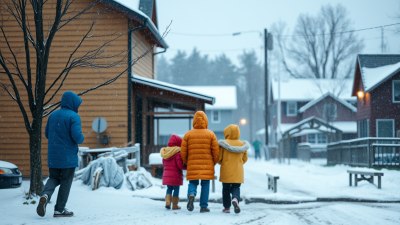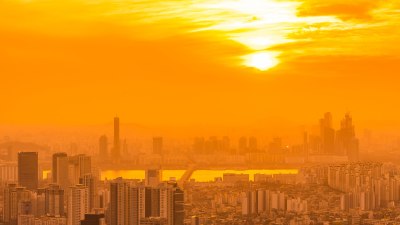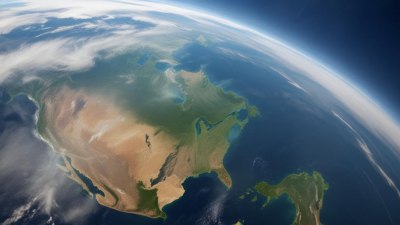How Weather Builds Community Without Us Realizing
Explore how weather subtly fosters community bonds through shared experiences, routines, and collective resilience.

Weather is often seen as a simple backdrop to our daily lives, an uncontrollable force that brings sunshine or rain, heat or cold. Yet, beyond its physical impact, weather plays a profound role in shaping the social fabric of communities. From ice-breaking conversations about an unexpected snowfall to cooperative efforts during storms, weather weaves a subtle thread that connects individuals to one another without them even realizing it.
Humans are inherently social creatures. We thrive on connections and often seek common ground to foster interactions. Weather serves as a universal topic, one that breaks barriers across languages, cultures, and social classes. A casual comment on a recent heatwave or a shared complaint about persistent rain often initiates conversations that might otherwise never happen. This simple exchange can lead to a sense of belonging, trust, and a deeper community spirit.
One of the most apparent ways that weather builds community is through shared experiences during extreme weather events. When storms, floods, blizzards, or heatwaves strike, neighbors often come together to help one another. These occasions reveal the resilience and cooperative nature of human beings. Helping a stranded driver, sharing supplies during a blackout, or clearing snow from a communal pathway are acts born from the collective challenge posed by weather. Such actions foster mutual reliance and strengthen community bonds, sometimes bridging divisions that may exist during normal times.
In many regions, weather patterns even influence community routines and cultural practices. Seasonal changes dictate agricultural cycles, festivals, and local traditions that bind people together. Harvest festivals in autumn or spring celebrations welcoming the end of winter are examples of how weather shapes not only the economy but also the cultural rhythm of a community. These events provide opportunities for social gatherings, reinforcing community identity and collective memory.
Urban design and architecture also reflect a community’s response to weather. In colder climates, community spaces like heated bus stops, indoor markets, or communal fire pits invite people to gather despite harsh conditions. Similarly, in warmer regions, shaded plazas and night markets encourage public interaction when the weather cools at dusk. These physical adaptations create environments conducive to socializing, nurturing communal ties through designed interactions influenced by environmental conditions.
A subtle and often overlooked effect of weather on communities lies in its impact on outdoor socialization. Pleasant weather promotes park visits, street fairs, and outdoor sports leagues, giving people frequent reasons to meet and connect in public spaces. Conversely, prolonged inclement weather might drive social activities indoors but can also foster intimate gatherings where stories and companionship flourish. Seasonal cycling of social patterns is deeply intertwined with weather rhythms, ensuring a dynamic social life attuned to nature’s fluctuations.
Weather also influences informal social networks that grow out of necessity. During particularly severe weather, digital communication spikes as neighbors use social media or messaging apps to coordinate resources, share warnings, or offer assistance. These networks often persist long after the weather event has passed, creating lasting relationships and trust that form the backbone of resilient communities. Technology, paired with shared environmental challenges, accelerates the bonding process initiated by weather-related needs.
An instructive example is the way snowstorms drive community response. In many northern towns, residents organize snow shoveling brigades, check on elderly neighbors, or collectively tackle sidewalk clearing. These activities transcend individual survival; they cultivate empathy and collective responsibility. Children playing together during snow days similarly develop social skills and friendships rooted in a shared weather event. Such community-building processes operate quietly beneath everyday life, fueled by a common environmental reality.
Moreover, weather shapes local economies in ways that encourage social cooperation. Seasonal businesses like ski resorts, summer camps, or farmers markets depend heavily on weather conditions. This economic reliance fosters collaborations and networks among business owners, workers, and patrons, creating communities linked by mutual economic interests centered around climate patterns. The need to adapt and innovate around weather challenges prompts creative partnerships that ripple through the broader community fabric.
Weather's psychological impact also facilitates community cohesion. Mild sunny days elevate mood and reduce stress, encouraging people to engage socially. Conversely, gloomy or harsh weather conditions often lead communities to band together in protective or supportive ways. Shared emotional responses to weather, whether joy or hardship, create emotional bonds among residents, enhancing empathy and collective well-being.
The relationship between weather and community is further complicated by climate change. As communities face shifting weather patterns, new challenges emerge that demand heightened cooperation and adaptation. Rising temperatures, unpredictable storms, and environmental disruptions require collective problem-solving and resilience-building efforts. These pressing challenges, while daunting, have the potential to strengthen community ties through shared purpose and mutual support in a changing climate landscape.
Schools and educational programs increasingly use weather as a lens to teach young people about environmental science, civic responsibility, and community engagement. Weather-related projects, such as community gardens or stormwater management initiatives, involve collaborative learning and action that nurture a sense of community stewardship. Such initiatives demonstrate how weather education can transcend knowledge transmission and become a catalyst for communal identity and cohesion.
Local governments also recognize the social importance of weather and incorporate it into planning and policy. Emergency preparedness plans include community outreach and volunteer networks that emphasize collective readiness. Public messaging about heatwaves, cold snaps, or air quality alerts often encourages neighbors to check on each other, especially vulnerable populations, again highlighting weather’s role in fostering social care.
Sports culture offers another example of weather's community-building power. Outdoor sports are intrinsically weather-dependent, and fans often gather under varying conditions, from rainy soccer matches to winter hockey games. These shared experiences become traditions, reinforcing community identities and pride. The weather elements add a dramatic dimension that unites players and spectators alike, amplifying camaraderie and collective enthusiasm.
Religious and spiritual communities also incorporate weather symbolism and rituals into their practices, strengthening bonds through shared beliefs about nature’s cycles. Ceremonies thanking the sun for warmth or rain for nourishment connect participants to one another and the environment, weaving weather into the spiritual and cultural fabric of community life.
The media plays a critical role in amplifying weather’s community-building effects by consistently highlighting local weather conditions, forecasts, and warnings. Meteorologists often include community messaging in their broadcasts, encouraging preparedness and neighborly care. Weather stories create a collective narrative that residents follow together, fostering a sense of shared experience and interest that transcends individual differences.
Another dimension involves local folklore and storytelling traditions shaped by weather. Tales of infamous storms, droughts, or unusual weather phenomena become part of a community’s oral history, passed through generations. These stories serve not only to entertain but also to unite people by preserving common experiences and lessons learned from nature’s unpredictable moods.
In some cultures, weather events have historically triggered significant migrations, urban developments, or social restructuring. The long-term effects of weather on settlement patterns and demographic shifts illustrate the deep, structural influence climate exerts on communities. While these changes may be disruptive initially, they often lead to new forms of community organization and resilience that incorporate weather as a central factor.
Ultimately, understanding how weather builds community without us realizing offers valuable insights into human social dynamics. It reminds us that our connections with each other are often rooted in shared environmental experiences, whether mundane or extraordinary. By recognizing and nurturing these subtle bonds, communities can foster greater empathy, cooperation, and resilience in the face of ongoing and future weather challenges.











